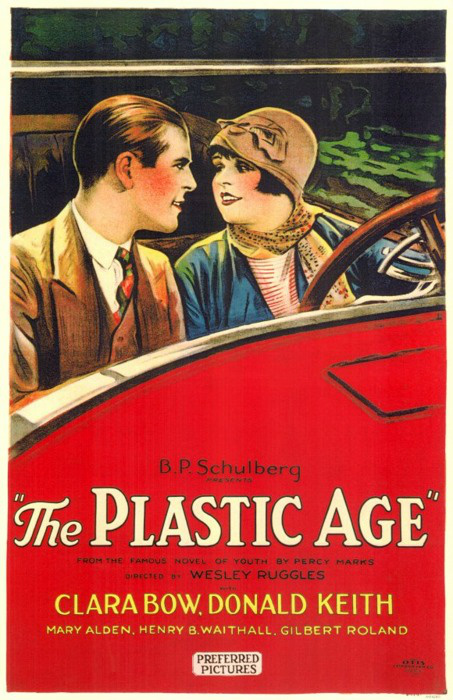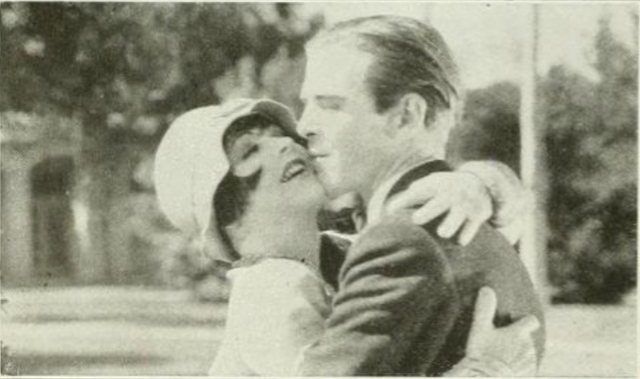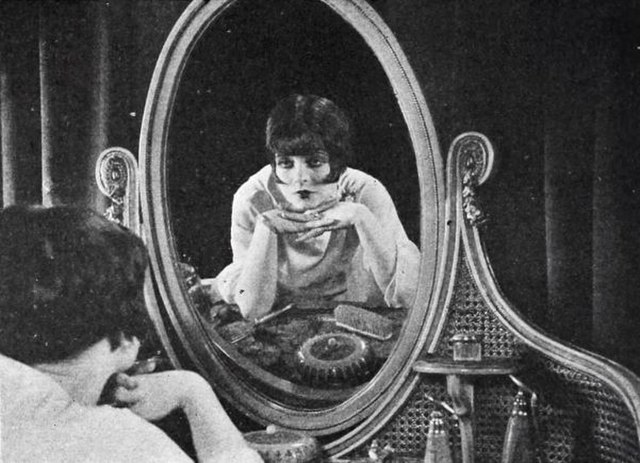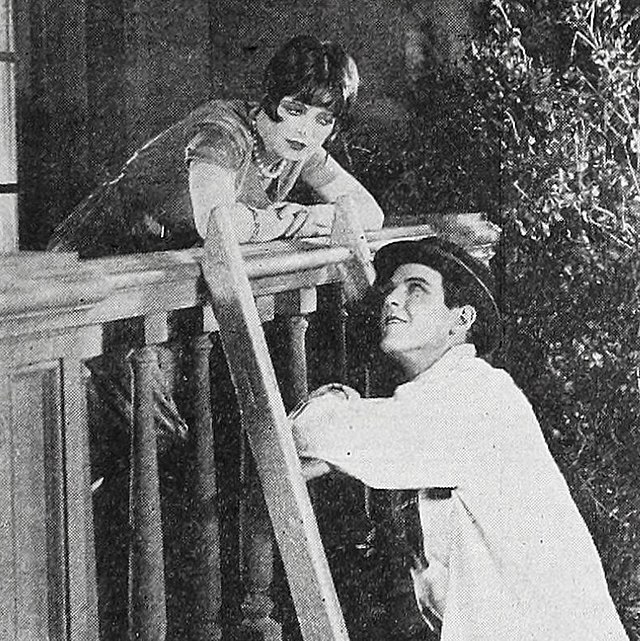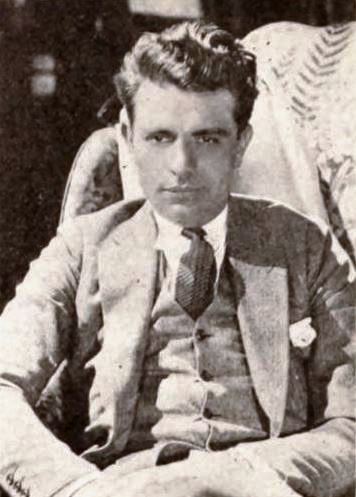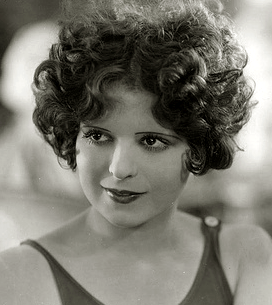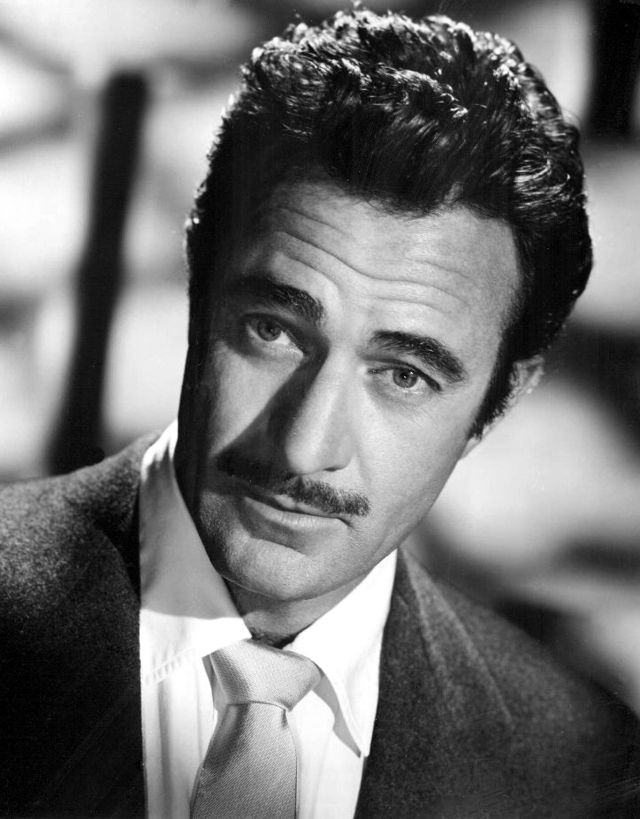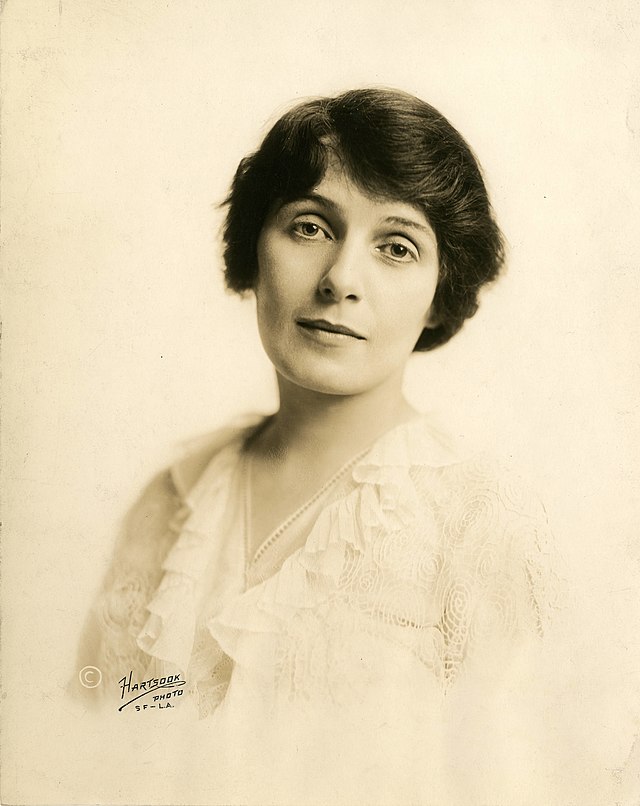The Plastic Age - 1925
back| Released by | Preferred Pictures |
| Director | Wesley Ruggles |
| Producer | B.P. Schulberg |
| Script | Adapted by Eve Unsell - Based on the novel |
| Cinematography | Allen G. Siegler |
| Music by | Silent Film |
| Running time | 73 minutes |
| Film budget | Unknown |
| Box office sales | Unknown |
| Main cast | Clara Bow - Gilbert Roland - Donald Keith - Mary Alden - David Butler |
The Plastic Age
A Vibrant Coming-Of-Age Tale
"The Plastic Age" is a silent drama film from 1925 that explores the experiences of a college freshman, Hugh Carver, played by Donald Keith, and his romantic entanglement with the flapper Cynthia Day, portrayed by Clara Bow.
Set against the backdrop of college life in the 1920s, the film delves into themes of youth, love, and the pressures of societal expectations. The narrative follows Hugh's journey from an idealistic and naïve young man to someone who confronts the complexities of adulthood. Clara Bow's performance was critically acclaimed and solidified her status as a major star of the silent film era.
Related
The Plastic Age – 1925
Summary and Analysis
"The Plastic Age," directed by Wesley Ruggles, is a silent film that captures the essence of 1920s American college life. The story centers around Hugh Carver, a freshman at Prescott College, who navigates the tumultuous and exhilarating world of higher education, social expectations, and personal growth.
Upon his arrival at Prescott College, Hugh Carver, played by Donald Keith, is the epitome of an idealistic and naive young man. He is dedicated to his studies and athletics, particularly track, where he shows great promise. Hugh's initial experiences at college are marked by a sense of innocence and a desire to succeed academically and athletically.
However, Hugh's life takes a dramatic turn when he meets Cynthia Day, portrayed by Clara Bow, the quintessential flapper of the era. Cynthia is vivacious, carefree, and embodies the liberated spirit of the Roaring Twenties. She introduces Hugh to a world of parties, jazz, and romance, challenging his previously held notions of responsibility and decorum.
As Hugh becomes more involved with Cynthia, he starts neglecting his studies and track commitments. The allure of Cynthia and the social scene she represents pull him away from his academic and athletic goals. This shift is not without consequences, as Hugh begins to face the disapproval of his peers, professors, and particularly Coach Henley, played by David Butler, who had high hopes for his athletic career.
The film reaches a critical point when Hugh realizes the detrimental impact his relationship with Cynthia and the party lifestyle have had on his life. This moment of self-awareness is pivotal, as he decides to refocus on his original aspirations. Hugh's journey is marked by a series of conflicts and resolutions that highlight the internal and external struggles of growing up.
In the end, Hugh manages to find a balance between his personal desires and his responsibilities. He reconciles with Cynthia, who also undergoes a transformation, recognizing the value of true companionship and support. Together, they embark on a more mature and balanced path, combining the joy of youth with the wisdom of experience.
Analysis:
"The Plastic Age" is a reflection of the 1920s, a decade marked by significant social change and the emergence of new cultural norms. The film's portrayal of college life is emblematic of the period's tension between tradition and modernity. The title itself, "The Plastic Age," suggests a time of malleability and transformation, both for the characters and society at large.
Clara Bow's performance as Cynthia Day is particularly noteworthy. She embodies the spirit of the flapper, a symbol of the liberated young woman who defies conventional expectations. Bow's charisma and energy bring depth to Cynthia, making her more than just a symbol of temptation for Hugh; she becomes a fully realized character with her own journey of growth.
Donald Keith's portrayal of Hugh Carver provides a counterbalance to Cynthia's exuberance. Hugh represents the struggle of young men of the era to reconcile their ambitions with the rapidly changing social landscape. His character arc is a classic coming-of-age story, marked by mistakes, realizations, and eventual maturation.
The film also touches on themes of peer pressure, the conflict between duty and desire, and the impact of romantic relationships on personal development. Hugh's initial infatuation with Cynthia leads to a period of indulgence and neglect, illustrating the seductive power of newfound freedom. However, his eventual recognition of the importance of balance and commitment underscores the film's moral message.
"The Plastic Age" serves as both a critique and a celebration of the 1920s. It critiques the excesses and superficialities of the era's social scene while celebrating the youthful energy and desire for change that characterized the decade. The film's resolution, with Hugh and Cynthia finding a middle ground, suggests a hopeful vision of the future where the lessons of youth can lead to a more fulfilling adulthood.
In conclusion, "The Plastic Age" is a significant film not only for its engaging narrative and strong performances but also for its portrayal of a pivotal moment in American cultural history. It captures the essence of a generation grappling with change and lays the groundwork for the coming-of-age stories that would become a staple of American cinema.
Classic Trailer from The Plastic Age:
Full Cast:
· Clara Bow as Cynthia Day
· Donald Keith as Hugh Carver
· Gilbert Roland as Carl Peters
· Mary Alden as Mrs. Carver
· David Butler as Coach Henley
· Henry B. Walthall as Professor
· Clarke Irvine as Coach Edward Henley
· Hazel Keener as Lottie
· Paul Nicholson as B.B.
· Jessie Arnold as Mrs. Henrietta Weaver
· Robert Agnew as Miles Poole
· Gail Morley as Mrs. Maud Reeves
· Julia Swayne Gordon as Miss Shannon
· Pat Harmon as Johnson
· Sally Rand as Student (uncredited)
· Carmelita Geraghty as Student (uncredited)
Analysis of Wesley Ruggles’ Direction:
Wesley Ruggles, a director known for his versatility and craftsmanship, brought a nuanced and dynamic touch to "The Plastic Age." His direction in this film showcases his ability to capture the essence of youth culture in the 1920s while delivering a compelling narrative with strong character development.
Capturing the Spirit of the 1920s: Ruggles excelled in conveying the atmosphere of the Roaring Twenties, a period characterized by social liberation, jazz music, and changing norms. He used the college setting to reflect the broader societal changes, highlighting the clash between traditional values and modern attitudes. The lively party scenes, the exuberant energy of the students, and the carefree lifestyle of the flapper generation were depicted with authenticity and flair. Ruggles' direction ensured that the film was not just a story about college life but also a snapshot of an entire era.
Balancing Humor and Drama: Ruggles skillfully balanced the comedic and dramatic elements of the film. The light-hearted moments, often centered around the antics of college students and the romantic escapades of Hugh and Cynthia, were juxtaposed with more serious themes of personal growth and responsibility. This balance kept the audience engaged and provided a well-rounded emotional experience. Ruggles’ direction ensured that neither the humor nor the drama overshadowed the other, creating a cohesive and engaging narrative.
Strong Character Development: One of Ruggles' strengths was his ability to develop multi-dimensional characters. Hugh Carver's transformation from an idealistic freshman to a more mature young man was portrayed with subtlety and depth. Similarly, Cynthia Day’s journey from a carefree flapper to someone who values true companionship was handled with care. Ruggles guided his actors to deliver performances that were both relatable and compelling, allowing the audience to connect with the characters on a deeper level.
Visual Storytelling: As a silent film, "The Plastic Age" relied heavily on visual storytelling, and Ruggles excelled in this area. He used innovative camera techniques and expressive cinematography to convey emotions and narrative progression. The use of close-ups to capture intimate moments, wide shots to depict the grandeur of college life, and creative intertitles to provide context and dialogue were all expertly handled. Ruggles' direction ensured that the story was clear and engaging even without spoken dialogue.
Pacing and Structure: Ruggles demonstrated a keen sense of pacing, ensuring that the film flowed smoothly from one scene to the next. The structure of the film allowed for a gradual build-up of tension and conflict, leading to a satisfying resolution. By carefully controlling the tempo of the narrative, Ruggles maintained the audience's interest and kept the story dynamic and engaging.
Collaborative Leadership: Ruggles' direction was marked by his ability to collaborate effectively with his cast and crew. He worked closely with the actors, particularly Clara Bow and Donald Keith, to bring out their best performances. His collaboration with the cinematographer, Allen G. Siegler, resulted in visually striking scenes that enhanced the storytelling. Ruggles' leadership ensured a harmonious production process, allowing for creativity and innovation on set.
Social Commentary: Through his direction, Ruggles also offered a subtle social commentary on the changing values of the time. The film explored themes of peer pressure, the pursuit of pleasure versus responsibility, and the search for identity in a rapidly changing world. Ruggles’ nuanced handling of these themes added depth to the film, making it more than just a romantic drama but a reflection on the challenges and opportunities faced by the youth of the 1920s.
In conclusion, Wesley Ruggles' direction in "The Plastic Age" was instrumental in making the film a success. His ability to capture the spirit of the era, balance humor and drama, develop strong characters, and tell the story visually contributed to the film's enduring appeal. Ruggles' direction ensured that "The Plastic Age" was not only an entertaining film but also a thoughtful and insightful exploration of youth and society in the 1920s.
Gilbert Roland’s Charmful Performance:
Gilbert Roland’s performance in "The Plastic Age" is notable for its depth and charm, contributing significantly to the film's dynamic portrayal of college life in the 1920s.
Character Interpretation: Roland played Carl Peters, a charismatic and confident student at Prescott College. His portrayal of Carl is marked by a nuanced understanding of the character's dual nature: on the one hand, Carl is a popular and influential figure among his peers; on the other, he embodies the temptations and carefree lifestyle that challenge the protagonist, Hugh Carver. Roland's interpretation effectively highlights this complexity, making Carl a memorable and multi-dimensional character.
Screen Presence: Gilbert Roland had a natural screen presence that commanded attention. His physical appearance, combined with his expressive acting style, made him a standout performer in the film. Roland's ability to convey emotions through subtle facial expressions and body language was particularly effective in a silent film where dialogue was absent. His charismatic presence added an essential layer to Carl Peters, making the character both alluring and slightly intimidating.
Chemistry with Co-stars: Roland's interactions with his co-stars, especially Donald Keith (Hugh Carver) and Clara Bow (Cynthia Day), were marked by a palpable chemistry that enhanced the film's narrative. His camaraderie with Keith’s character underscored the peer pressure and influence Carl exerted on Hugh, while his flirtatious and charming demeanor around Bow's Cynthia added to the romantic and social dynamics of the story. Roland's ability to create believable and engaging relationships on screen contributed to the overall authenticity of the film.
Emotional Range: Despite the constraints of silent film, Roland displayed a remarkable emotional range in his performance. He adeptly transitioned between moments of light-heartedness and intensity, reflecting the varied facets of college life. Whether portraying Carl's playful and carefree side during parties or his more serious and contemplative moments, Roland's performance was consistently compelling. This versatility made Carl Peters a well-rounded character who could evoke both admiration and caution from the audience.
Contribution to Themes: Roland's portrayal of Carl Peters played a crucial role in exploring the film's central themes. His character epitomized the allure of the Roaring Twenties, representing the era's freedom, excitement, and sometimes reckless abandon. Through Carl, Roland effectively conveyed the conflict between indulgence and responsibility that defined the experiences of young people during that time. His performance helped to highlight the film’s moral undertones, emphasizing the consequences of yielding to temptation and the importance of personal growth and balance.
Physicality and Expression: Gilbert Roland’s physicality and expressive acting were perfectly suited to the silent film medium. He used his body language and facial expressions to communicate complex emotions and reactions, making his performance accessible and engaging to the audience. Roland’s athletic build and graceful movements added an extra dimension to his portrayal, making Carl Peters a dynamic and visually appealing character.
Legacy and Impact: Roland’s performance in "The Plastic Age" contributed to his burgeoning career in Hollywood. His ability to captivate audiences with his charm and acting prowess in this film helped establish him as a talented and versatile actor. The role of Carl Peters showcased his potential and set the stage for his future successes in both silent and talking pictures.
In conclusion, Gilbert Roland’s performance in "The Plastic Age" was marked by his charismatic screen presence, nuanced character interpretation, and emotional range. His portrayal of Carl Peters not only added depth to the film but also played a significant role in exploring its central themes. Roland's ability to convey complex emotions through physicality and expression made his performance a standout element of the movie, contributing to its enduring appeal and success.
Notable Film Quotes:
Cynthia Day (Clara Bow):
- "Isn't it wonderful to be alive and young and to feel that something marvelous is just around the corner?"
- "Let's make the most of our youth while we have it!"
Hugh Carver (Donald Keith):
- "I'm here to study and make something of myself, not to waste my time on frivolities."
- "I've got to get back on track – for my sake and for those who believe in me."
Coach Henley (David Butler):
- "Discipline and dedication are what make a real man, Hugh. Don't let anything divert you from your goals."
- "Winning isn't everything, but striving to be the best you can be is."
Carl Peters (Gilbert Roland):
- "Life is meant to be enjoyed, Hugh. Don't take everything so seriously."
- "Why worry about tomorrow when we have today to live to the fullest?"
Mrs. Carver (Mary Alden):
- "Hugh, remember your father's dreams for you. Make him proud by being true to yourself and your aspirations."
No Formal Recognition:
The Plastic Age" (1925) did not receive any formal awards or nominations. During the 1920s, the modern system of film awards and nominations, such as the Academy Awards (which began in 1929), did not exist. Therefore, films from this era often did not receive the same kind of formal recognition through awards as films do today.
Despite the lack of awards, "The Plastic Age" was a significant commercial success and played an essential role in boosting the career of Clara Bow, who went on to become one of the biggest stars of the silent film era. The film is remembered for its cultural impact and for capturing the spirit of the 1920s, rather than for any specific accolades.
Classic Scenes from “The Plastic Age”:
The Freshman Arrival Scene:
In this opening scene, Hugh Carver arrives at Prescott College, full of optimism and nervous excitement. This scene sets the tone for the film, showcasing the bustling campus life and the contrast between Hugh’s initial naivety and the more seasoned students. The hustle and bustle, complete with students moving into dorms and engaging in various activities, captures the anticipation and energy of starting college.
The Track Meet:
Hugh's participation in the college track meet is a pivotal scene that highlights his athletic prowess and dedication. The tension builds as he competes, cheered on by his peers and pressured by his coach, Coach Henley. This scene not only showcases Hugh's talent but also underscores the high expectations placed on him. The cinematography captures the intensity and physicality of the race, emphasizing Hugh's determination.
The College Party:
One of the most iconic scenes in the film is the college party where Hugh meets Cynthia Day. The scene is filled with the vibrancy and exuberance of the 1920s, complete with lively jazz music, dancing, and the carefree spirit of the era. Clara Bow's portrayal of Cynthia as the quintessential flapper is captivating, and her introduction to Hugh marks the beginning of his journey into a more socially active and less disciplined lifestyle. This scene encapsulates the allure and decadence of the Roaring Twenties.
Hugh’s Downfall:
This sequence of scenes shows Hugh's decline as he becomes more entangled in the party lifestyle and his relationship with Cynthia. His grades slip, he misses track practices, and he starts to lose the respect of his peers and coaches. These scenes are critical in illustrating the internal and external conflicts Hugh faces as he grapples with his desires versus his responsibilities. The contrast between his former disciplined self and his current state is starkly portrayed.
The Confrontation with Coach Henley:
In this dramatic scene, Coach Henley confronts Hugh about his deteriorating performance and lack of commitment. The coach's stern yet concerned demeanor highlights the disappointment and frustration felt by those who believed in Hugh. This scene serves as a wake-up call for Hugh, pushing him to reflect on his choices and the path he wants to take. The dialogue and expressions in this scene powerfully convey the themes of discipline and personal responsibility.
The Redemption Arc:
Towards the end of the film, Hugh decides to turn his life around. This sequence shows him recommitting to his studies and track training, reconciling with his peers, and mending his relationship with Cynthia, who also undergoes her transformation. The redemption arc is emotionally charged and satisfying, showcasing Hugh’s growth and determination to balance his personal desires with his responsibilities. This culmination of his journey is visually and narratively impactful.
The Final Track Meet:
The climactic track meet at the end of the film is both thrilling and symbolic. It represents Hugh’s chance at redemption and his return to form. The intensity of the race, combined with the support of his friends and the presence of Cynthia, creates a powerful and uplifting conclusion. The cinematography during the race captures the physical and emotional stakes, making it a memorable and exhilarating scene.
The Closing Scene:
The film concludes with Hugh and Cynthia looking towards the future with hope and determination. This final scene encapsulates the film's message about the importance of finding a balance between youthful exuberance and mature responsibility. It leaves the audience with a sense of closure and optimism for the characters' futures.
These classic scenes from "The Plastic Age" highlight the film's ability to blend humor, drama, and social commentary, making it a memorable depiction of 1920s college life and the journey of personal growth.

